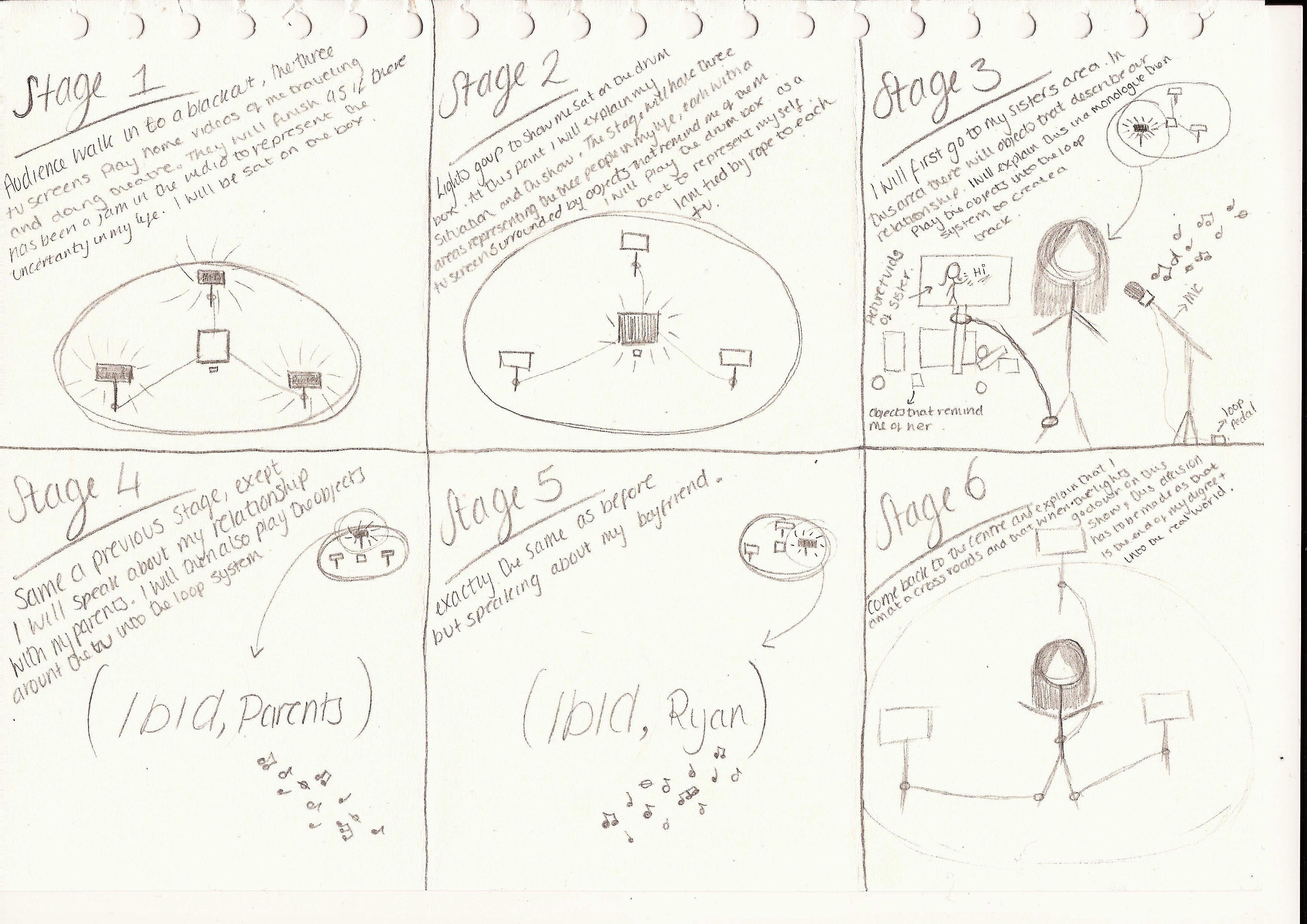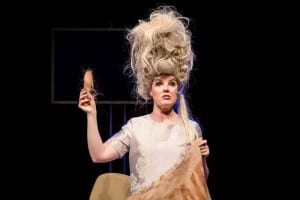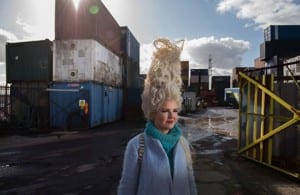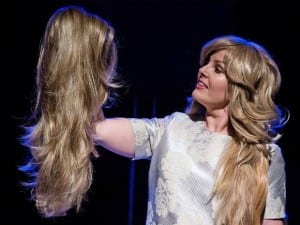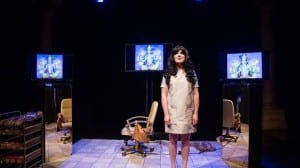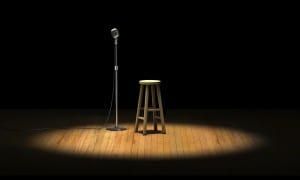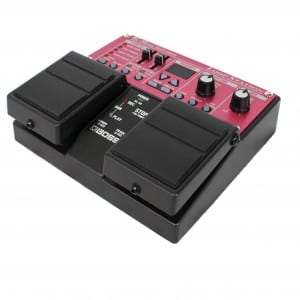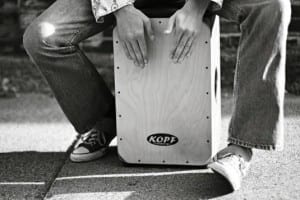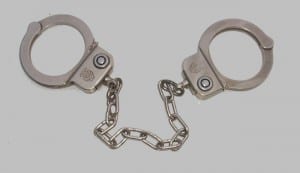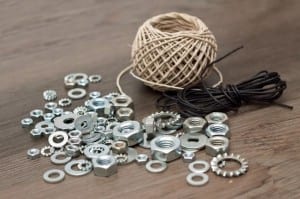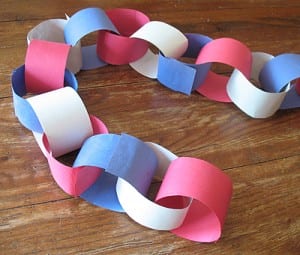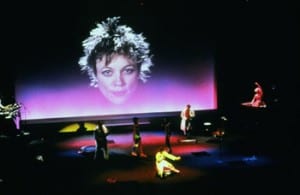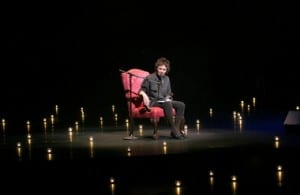I am no artist. My talents do not lie in the art of drawing. Stick men are the extent of my ability and even they are lacking in style. However, this is my storyboard of my show so far.
Author Archives: Charlotte Roberts
Hair Peace
Last week I watched the fantastic Victoria Melody perform another one of her smash hit shows. Melody is an award winning solo performance artists with a background in Fine Art. What I absolutely loved about her was her personality. She was full of energy and seemed to be comfortable around everyone she spoke to. One reviewer stated that ‘she is either an idiot or a genius, it’s up to you to decide’ (Melody, 2010). Personally I think she’s a genius. Her infectious personality clearly transposed into her performance as she managed to confidently portray quite serious social issues, whilst being ‘unpretentiously funny’ (Hutera, 2015). Her background in Fine Art means she explores the scenarios and topics in great depth. She often ‘immerses herself into communities and become an active participant in the rituals as research for her work’ (Melody, 2010).Throughout her careers she has immersed herself with numerous social groups and careers. She has become a pigeon racer, a champion dog handler, a northern soul dancer and a beauty queen. It was her experience as a beauty queen that influenced her next performance Hair Peace (2016).
Hair Peace (2016)
Hair Peace was an exploration into the origins of hair extensions. Whilst partaking in Mrs Brighton beauty pageant for her show Major Tom (2014) she wondered who the hair extensions that were being sown into her head belonged to. This prompted her to travel the world and speak to members of the hair industry, forensic scientists, and those whose hair makes the extensions. One review stated that ‘it is the journey rather than the arrival that is interesting here’ (The Guardian, 2007), which I believe sums up this performance very nicely. It was certainly interesting, as an audience member, to be taken on this journey of discovery into the profitable work of the hair market.
What I took from the performance
- Her casual style of delivery – It didn’t seem as though she was acting at all, but rather explaining her story to a group of friends. Personally, her casual performance really put me at ease, and by the end of it I felt weirdly comfortable around someone that I met only an hour ago. I would really like to incorporate this casual delivery into my performance.
- When asked how much she improvised, she stated that it is 70% scripted, 30% improvised – This keeps the performance exciting as it allows her to occasionally deviate off script to react to the audience. Having a strict structure can affect the relationship between the actor and audience. It can make the whole performance feel more formal. I want to create a relaxed atmosphere and connect with my audience to allow them to become part of the performance, and if they wish to engage in conversation with me, then the structure will allow for deviations.
- The structure of the performance and layout of the set – The set was three televisions placed in three corners of the performance space. Each screen represented a separate person (her sister, the forensic scientist, and her friend in India). I really liked this layout. Three separate areas for three separate people, and the televisions representing these people. I think that I would be able to incorporate this into my solo performance with the three people I wish to talk about (my boyfriend, parents and sister).
- The use of media and home videos – Not only did the televisions project the three people, but also videos of her in the pageants, photos of her sister, and videos of her time in India. Such videos allows the audience to understand the backstory to her performance. The videos and pictures of her sister allowed the audience to know her as a person more than a name, which allowed them to get more involved in the narrative. The same with the videos of her in the beauty pageants. This has made me consider the use of media and video in my performance. This would complement the verbal explanation of my story and enable the audience to visibly see what I will be discussing. For this I want to use a short video compilation of my home videos that will be projected at the beginning of the performance, before the lights have come up on me, and before any spoken dialogue. I have many (rather embarrassing) home videos of me performing in my living room to my (very patient) parents. Luckily my mum captured most of my existence on video tape, so there are plenty of clips of myself performing, right up until the present day. These will allow the audience to understand that I’ve wanted to perform since a young age, thus the performance concept will hopefully become clearer.
Bringing the screen into the theatre
Using multimedia on stage is a relatively recent phenomenon in the large scale of theatre. ‘Where early television advertised itself as bringing theatre into your home, it seems now as if theatre advertises itself as bringing television or cinema into your local theatre’ (Giesekan, 2007,4). Many performers and theorist believe that the inclusion of multimedia element destroys the liveness of theatre as ‘performance gains its power from the fact that it is created as we watch’ (ibid, 1). However, I personally disagree with this as the inclusion of video can create a new layer of space and time within the live performance. Freda Chapple and Chiel Kattenbelt agrees with this concept and state that ‘the closed continuum of time can be broken, as video can introduce a different dimension of time in the performance’ (Chapple and Kattenbelt, 2006, 71). Thus through video I would be able to take the audience to different moments in time, such as my childhood, and bring external people into the performance space via digital media.
Work Cited
Chapple, C., Kattenbelt, C. (2006) Intermediality in Theatre and Performance. Amsterdam: Rodopi.
Hutera, D. (2015) Hair Peace at Pleasance Courtyard, Edinburgh Festival. London: The Times. Available from http://www.thetimes.co.uk/tto/arts/stage/edinburgh-festival/article4527528.ece [Accessed 8 March 2016].
Melody, V. (2010) Victoria Melody: About. Available from http://www.victoriamelody.co.uk/about/index.php[Accessed 6 March 2010].
Melody, V. (2010) Victoria Melody. Available from http://www.victoriamelody.co.uk/home/index.php [Accessed 6 March 2010].
The Guardian. (2007) Hair Peace at Edinburgh festival review – the secret life of locks. [online] London: The Guardian. Available from http://www.theguardian.com/stage/2015/aug/24/hair-peace-at-edinburgh-festival-review-victoria-melody-pleasance [Accessed 7 March 2016].
Giesekam, G. (2007) Staging the Screen: The Use of Film and Video in Theatre. Basingstoke: Palgrave Macmillan.
Layout and materials
I want to be sat in a sharply defined white spotlight with several representations of my goals dimly lit outside of the spotlight e.g. traveling backpacks, dance shoes, microphones, maps, stage lights, costumes, music scores etc. I want to be sat on a Cajon drum throughout the performance and have a loop station by my feet.
Each restraint is made up of different material that I will use to create a beat or noise. I think that realistically I will have to choose materials that I can make a decent sound from, however at the moment I would really like to chose material that has something to do with the aspect I would be talking about. Below are some ideas:
Handcuffs (boyfriend) – My boyfriend is in the police force. This has always been a dream of his. This means that he has a permanent job at home, and although I’m over the moon for him, it does alter my dream of traveling with him after university.
Nuts and bolts (sister) – Last year my sister had major back surgery to re-correct her spine. She had to have metal plates put into her back to keep her spine in place, and so I gave her the nickname ‘Bolt’. For me, this operation was the turning point with my relationship with my sister. She matured a lot from this experience and so the 4 year age gap shrank, meaning I saw her as more of a friend than a little sister. This new relationship is something that I am reluctant to move away from.
Paper chains (mum and dad) – Ever since I was little, we made paper chains at every possible occasion. My parents are understandably reluctant for me to grow up and have always placed a lot of importance on spending lots of good quality time together. Although they are extremely supportive of my aspirations, being brought up in such a tight-knit family, it places a lot of pressure on me to stay locally and carry on these family traditions.
First performance concept – Freedom & stillness
I want to create an autobiographical piece based on my constant battle between my aspirations and my family and relationship ties back at home. I never intended to by tied down by love, or have a relationship with my family that would make me think twice about leaving. I grew up very much with the aspirations to travel the world, achieve my goals, and chase my dream. I have always wanted to be an actress in musical theatre; I want to go to drama school, and go wherever it needs me to go to achieve this. I was always independent and had no intention to be tied down by anything or anyone. However life threw at me things I couldn’t ignore.
My relationship with my boyfriend
My relationship with my sister
The pressures of ‘family time’ from my parents.
Through music, technology and storytelling, I want to metaphorically stage these three aspects. Stage my internal battle between my love for home, and my need for a career. How I feel tethered to home life and unable to chase my dreams. I want to be sat in a spotlight, centre stage, on a drum box with a loop system by my feet. Outside of the spotlight there will be objects that represent my goals. I want to be loosely attached to three restraints (representing the three aspects of my life) that will be made from three types of material (chain, wire etc.). These will be loose enough for me to move within the spotlight but no further. The show will begin with me playing a drumbeat that will be recorded into the loop system and played under the entire show (this represents myself).
I shall talk about each aspect of my life individually (all the while sat on the box to represent my lack of mobility in life). Each time I speak about an aspect, I shall create a sound/tune/beat with the type of material that represents them. For example, a wire represents my sister as she use to play violin, therefore I play the wire with a violin bow and record the tune. Each tune is recorded into the loop box and layered on top on one another and the drum beat. After each aspect is talked about there will be a metaphorical musical track that represents my struggle between home life and aspirations.
At this moment in time, I’m not sure whether to include this. However to finish the performance I would write a song to sing along to the track that was created. As my aspiration is to do with music, I feel song and music would work well to portray this theme.
I really like the phrase ‘freedom and stillness‘ (Greenstreet, 2015) that Laurie Anderson used when asked how she would describe love. I feel it captures both the freedom and happiness one feels when in love, yet stillness through being emotionally tethered to this person. I feel like this would be the perfect title for my performance.
Work cited
Greenstreet, R. (2015) Q&A: Laurie Anderson. [online] London: The Guardian. Available from http://www.theguardian.com/lifeandstyle/2015/may/16/laurie-anderson-interview [Accessed 20 February 2016].
Laurie Anderson
Laurie Anderson is proving to be a very influential practitioner. Her use of short stories, music and technology has landed her right in the center of my research. After changing my mind numerous times, I have decided to perform an autobiographical piece based on the impact my family and relationship have on my career aspirations. Whilst researching her performance techniques I stumbled across an interview where Laurie herself summed up my performance in one simply sentence:
When asked, what does love feel like? Laurie replied ‘freedom and stillness. Lack of striving. Contentment’ (Greenstreet, 2015)
This phrase captures exactly the struggle that I want to portray. How the things you love most can sometimes be the things that can, physically and mentally, hold you back.
Anderson’s performances are often packed full of out of this world technological spectacles, dancers in eye-catching costumes and striking sets. Although I can appreciate how successful this theatrical construction was, I feel that it could sometimes overpower her social commentary and underlying stories. John O’Mahony commented that in more recent productions, Anderson’s work has become more reserved and focuses on the social commentaries and the music itself as opposed to the spectacle. Dirtday! (2012) ‘has little of her trademark back-projected hi-tec wizardry. [Suggesting that] those things get in the way of the music’ (O’Mahony, 2009). Although I shall take influence from Anderson’s earlier musical performances, I wish to stage my performance more simply like her later work so there are little distractions to the story.
^ Original eccentric staging ^ More recent relaxed staging.
It is easy to get swept up in the musical spectacle, and overlook her extraordinary storytelling ability. ‘What people really love about Laurie Anderson are the stories she tells, and the way she tells them’ (McDaid, 2008). Many of her performances are social commentaries on current social situations, however the way she tells them, with her soft lullaby-like vocals, captures the audience and draws them into the story more. The way she speaks is beautifully poetic. The language she uses paints a picture that captures the audience through its abstract metaphors, using ironicaly beautiful words to describe a not-so-beautiful topic. This is something that I want to incorporate into the spoken part of my piece. Providing the audience with not only a physical picture of my situation, but a chance to create their own picture in their imaginations through the use of language.
Storytelling ability aside, it is undeniable that Laurie Anderson is most famous for her music. What makes her work stand out from other musical performance art is her avant-garde approach to music and sound. For example, The Afternoon of Automotive Transmission (1972), which was a symphony of car horns held in a park. The making of music from everyday objects is something I really like of Anderson’s work. In my performance I want to be tied down by three materials (chains, rope, wire, etc.) from which I will create sounds. These sounds will then be layered on top of one another to create a musical track. One idea is to be restrained by wire, which I would then play with a violin bow.
Like Anderson, I really enjoy minimalism in terms of music and I want to focus on avant-garde music as opposed to the standard structured song. Walt Whitman once rightly stated that ‘simplicity is the glory of expression’ (Whitman and Reynolds, 2005, 12). I want to use the loop system to create minimalistic sounds that then can be placed onto of one another to create a complex score of metaphorical music.
Work cited
Greenstreet, R. (2015) Q&A: Laurie Anderson. [online] London: The Guardian. Available from http://www.theguardian.com/lifeandstyle/2015/may/16/laurie-anderson-interview [Accessed 20 February 2016].
McDaid, C. (2008) Storytime with knobs on. [online] London: The Guardian. Available from http://www.theguardian.com/music/2008/may/04/popandrock3 [Accessed 19 February 2016].
O’Mahony, J. (2008) Adults are idiots. [online] London: The Guardian. Available from http://www.theguardian.com/music/2008/apr/07/electronicmusic.art [Accessed 20 February 2016].
Whitman, W., Reynolds, D, S. (2005) Leaves of Grass. Oxford: Oxford University Press.

